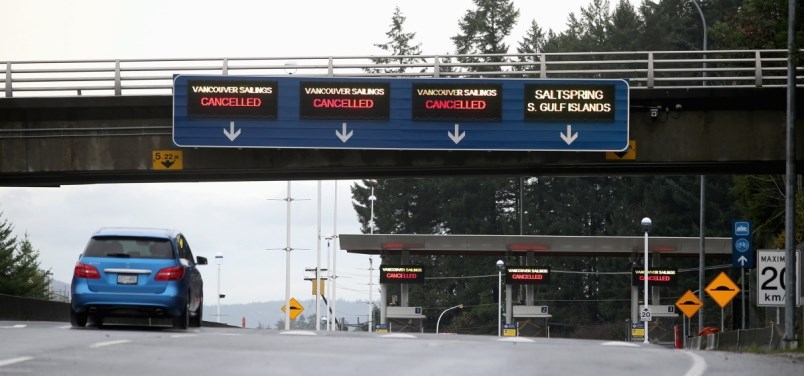 The good news is: Some of the goodies B.C. Ferries used to provide have been restored and many of the service cuts are being reversed.
The good news is: Some of the goodies B.C. Ferries used to provide have been restored and many of the service cuts are being reversed.
The bad news is: This is all going to cost a lot of money.
Transportation Minister Claire Trevena doesn’t just order up 2,700 more sailings a year by B.C. Ferries. The government has to buy them. When she announced the restoration of those sailings on the minor routes last week, she did it by way of adding $5.8 million a year to the contract the government has with B.C. Ferries.
The cost of that contract has risen since the NDP took power.
(Exactly the opposite occurred during the NDP government of the 1990s, when the subsidy shrank markedly.)
There will likely be more increases to come if the ideas in an independent review she released last week take hold.
The previous B.C. Liberal government slashed numerous routes and increased fares an average 80 per cent over 13 years. Partly as a result, the government’s ongoing subsidy through the service contract was held in the $194-million-a-year range over the past few years.
When the NDP took over in 2017, it reversed some of the cuts. Free mid-week sailings for seniors, which were changed by the Liberals to half-price fares, were restored. A 15 per cent fare reduction was announced for minor routes.
Those and other factors bumped the cost of the service contract up to $221 million in the NDP’s first year in power. Last week’s budget hikes that to $227 million.
While seniors enjoy free mid-week rides and all riders enjoy the fare cuts, the ongoing fare freeze and the prospect of more sailings on the minor routes, taxpayers are collectively paying for all that.
The independent review of ferries by Blair Redlin released last week has more cost implications, as well.
The NDP has been skeptical of the arm’s-length contract arrangement between B.C. and the ferry corporation for years. But the government decided to maintain it. So many of the changes recommended in the review will be accomplished through that contract.
The basis for the report was to “consider what more might be done in support of the public interest in an affordable and reliable ferry service.”
Redlin noted the ferry corporation emerged from the financial crunch three years ago and has been posting good earnings and increased ridership since then.
One of his recommendations is about the general philosophy on how the corporation is run. There’s language in the law about the need for a “commercial approach,” but Redlin said it’s unclear what that means.
That section should be repealed, he said.
In the same vein, the report recommends work on a new provincial vision and policy framework for coastal transportation.
The coastal ferry-services contract specifies the routes that the government is willing to pay the corporation to serve. So the Transportation Ministry should adopt a new vision and look at big ideas for change, such as a new terminal on Iona Island in the Fraser River, and Colwood-Esquimalt and Saanich Peninsula-Cowichan Valley service for walk-ons.
There’s also a need for more resiliency in the system, meaning several more ships for spare capacity. And reduction of sailing waits should be included in the new vision as a policy goal.
The corporation plows most of its net revenues back into the operation and already has a sizable debt load due to its new ship commitments. Any more new vessels would likely be bought by taxpayers.
Trevena said that vision of connecting coastal communities in a more integrated manner “is something my staff and I will be focused on.”
She said legislation is coming to amend the legislation governing the ferry system to ensure the model is “putting people first.”
The report and the government’s reaction put into focus a vague stance the NDP has held for years, that the ferries should be considered “part of the marine highway system.”
It was always inferred to mean that provincewide taxpayers should cover a lot more of the costs to protect users from fare increases.
Now that’s clear government policy.



